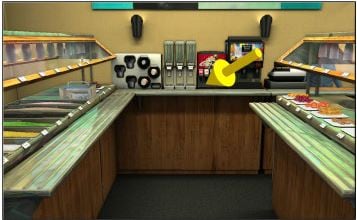According to the research team, the tool, even in its present form, could prove useful in gauging parental behaviour, addressing and preventing childhood obesity.
Work carried out in the US reveals that the choices parents made for themselves and their children within a VR buffet setting closely correlated to their actions in a real-world setting.
Data collected by the team represents an innovative approach in assessing feeding behaviour with future applications for educating parents on healthy eating habits and practices.
The difficulty in measuring these behaviours and outcomes have limited researchers' ability to address such issues. Current measures rely upon self-reporting or self-assessments.
Popular methods include the use of food photographs or observation of lab-based meals. These approaches has major limitations, with contextual cues lacking in real-world feeding environments that could influence a parent's actual feeding choices.
VR education and storytelling

The work carried out at the National Human Genome Research Institute (NHGRI) in the US adds another string to VR’s bow that has seen the technology adopted in various guises by the food industry.
Nescafe and Google’ VR coffee experience, allows users to view coffee fields in Brazil via a mobile phone app and Google viewer.
Meanwhile US-based start-up Project Nourished uses VR to investigate whether it’s possible to enjoy a meal by manipulating sight, taste, smell, hearing and touch—with or without a meal’s caloric intake.
Interactive VR storytelling is one goal for a contactless food-delivery system, devised by University of Sussex researchers, which levitates tiny amounts of food and drink using low-cost ultrasonic transducers to form waves that carry the food.
The technology can be fine-tuned to such a degree that it can even deliver food in a certain order, such as cheese followed by wine, or together, such as espresso with milk.
VR research summary
Led by Dr Susan Persky, head of the Immersive Virtual Environment Testing Unit at NHGRI, a sample of 52 parents of children aged 3–7 were served a meal of pasta and apple juice in both a virtual setting and real-world setting.
Parents then served the child, choosing the food from the full set of food options in the VR Buffet. They then completed a food estimation task and questionnaire, which assessed their VR Buffet perceptions.
Results showed the amount of virtual pasta served by parents were linked to the amount of real pasta they would serve as did amounts of served virtual and real apple juice.
Parents’ perception of the calorie content of chosen foods was also correlated closely with observed calorie content. The parents agreed that they would feed the meal they created to their child.
“Parents tended to serve more calories to their children in the in-vivo as opposed to VR scenario, however, the VR buffet is meant to assess differences in feeding behaviour between parents in various groups or experimental conditions,” the study added.
“Therefore, it is relative choice behaviour, and not absolute calorie counts, that is particularly relevant for this tool.”
‘Rapid growth of VR technology’

The research team acknowledged the limitations of the study commenting on the technology as an emerging one ripe for innovation and development.
“Although the VR Buffet is realistic in many ways, it is missing some sensory cues including scent and haptics. In addition, both more targeted olfactory feedback as well as haptics will likely become possible with the rapid growth of VR technology.
“Future studies using the VR buffet should also allow parents to use multiple plates if needed, or that studies could focus on parents of younger children who typically select less food.
Source: Appetite
Published online ahead of print: doi.org/10.1016/j.appet.2017.12.007
“Validity of assessing child feeding with virtual reality.”
Authors: Susan Persky, Megan Goldring, Sara Turner, Rachel Cohen, William Kistler
